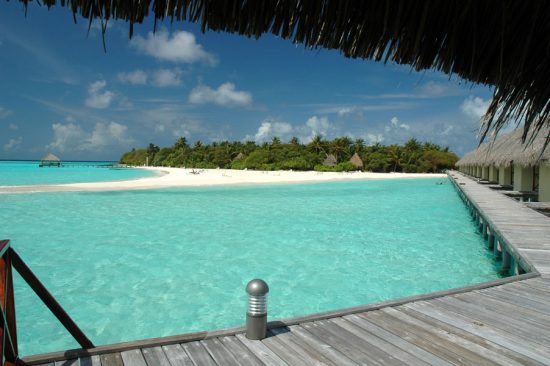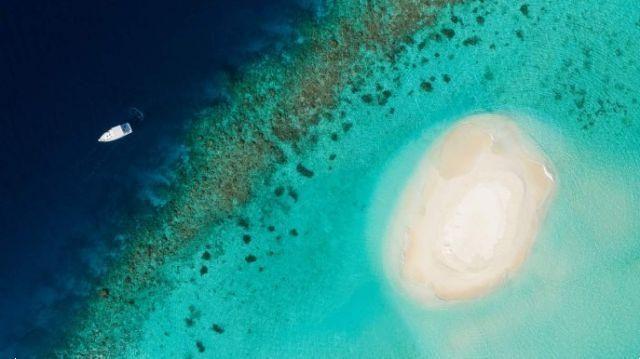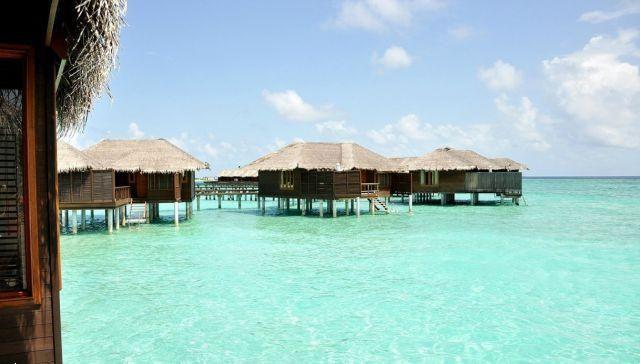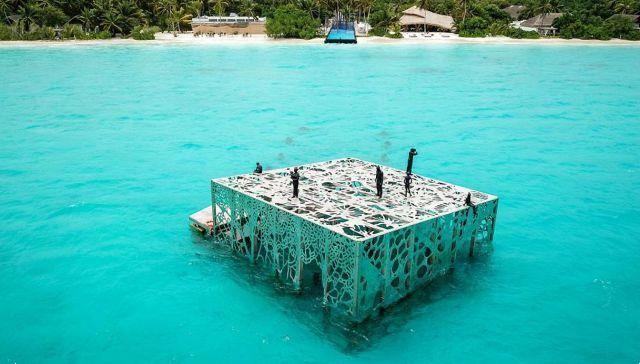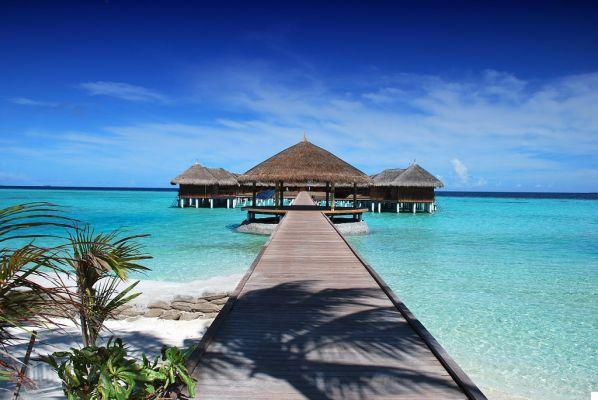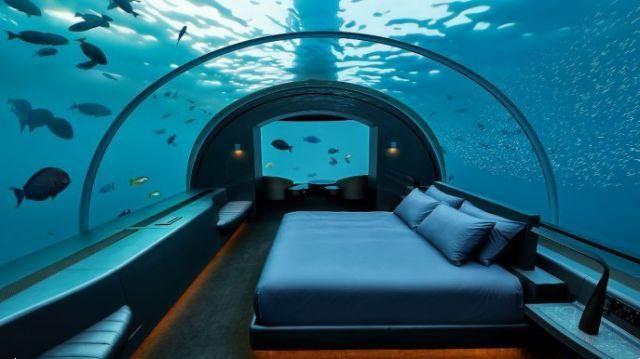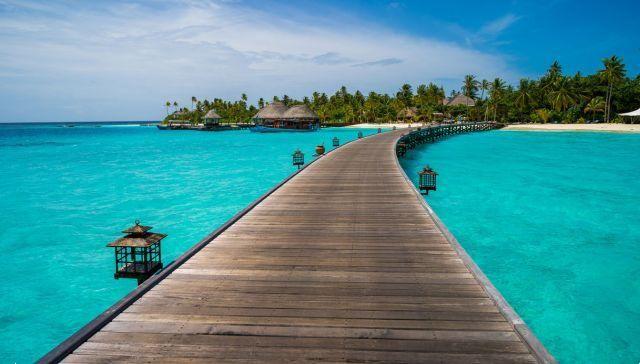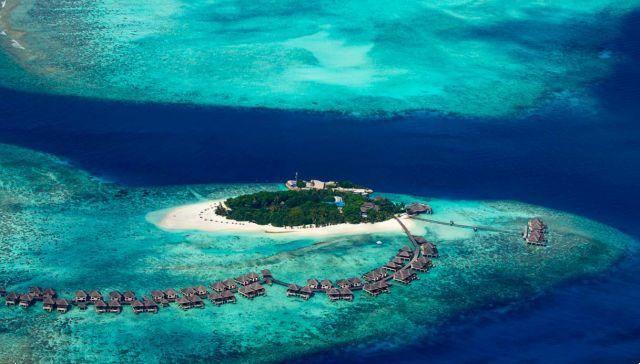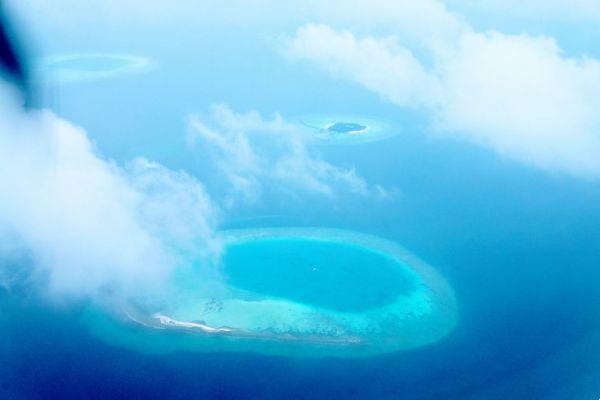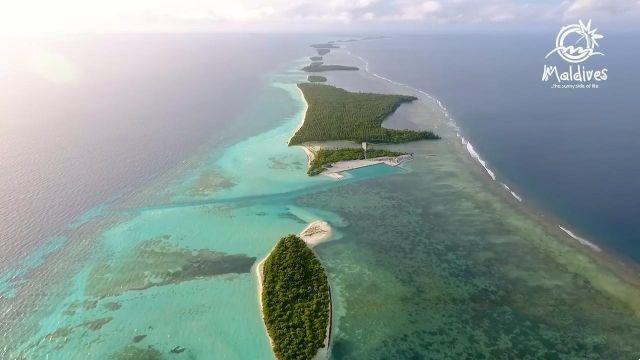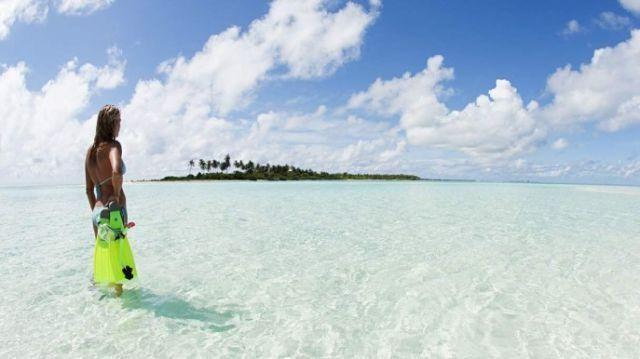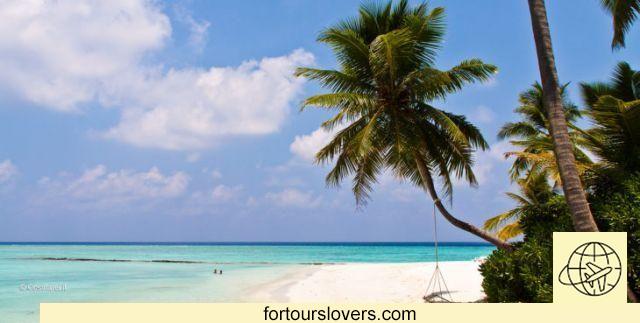
Maldives
11 things to do and see in the Maldives and 3 not to doAlthough the Maldives tourist industry promotes a fairly stereotypical image of these islands, all in the name of deserted beaches, sea and tranquility, on the contrary the profile of the tourist who decides to take a vacation in these parts is not unique. There are lovers of luxury (the Maldives, from this point of view, have an offer with few equals in the world), there are wedding couple, families with children in tow e independent travelers, mostly diving enthusiasts. The clarification is important, as it suggests prudence in the choice of stay, precisely to avoid being in a situation different from the one imagined. A choice that in recent years - it must be said - has grown considerably thanks to guesthouse, private homes adapted for guests in which, however, unlike traditional accommodations, there is greater interaction with the local population. An important detail that allows us to deepen the uses and customs of Maldivians, Muslims (even obtaining citizenship is subordinated to the profession of Islamic faith) and anchored to a rather conservative system of values. There is another way to realize the difference between the “tourist” Maldives and those, instead, of those who live there all year round. This other way is to visit Malè (even just a couple of hours), the capital where almost a third of the population of the Republic of Maldives lives. Our story starts right here. Happy reading.
PS: In recent years, the Maldives have experienced various phases of political instability with the increase of marches and demonstrations especially in the capital Malé. It must be said, however, that so far the tourist economy has not suffered repercussions. However, before traveling to a distant destination like the Maldives, it is always advisable to consult the place "Traveling safe" del Ministry of Foreign Affairs, as well as register in the place "Where we are in the world" always within theCrisis Unit of the Farnesina.
1 Male
As reiterated at the beginning if, in addition to the exotic aspect of the Maldives, you wish to deepen the culture, customs and traditions of its inhabitants, it is advisable to visit, even if only for a few hours, Male, the capital. The first, macroscopic, difference from the classic landscape of the archipelago is the hyper-urbanization of this island of just 5 square kilometers. An unstoppable phenomenon that began in the 30s of the last century with the opening of banks, schools and public offices and continued in the 70s with the explosion of tourism. Even so, however, the image does not completely coincide with that of a "classic" capital. In fact, in the midst of so many buildings and skyscrapers, authentically “Maldivian” social spaces survive, such as the fruit and vegetable market and the fish market. Visiting them does not only mean witnessing the excited moments of the sale, but it gives the measure of how much traditional activities retain a far from marginal role in the local economy, especially for the inhabitants of the more distant islands. Religion also plays a very important role, for example, by requiring tourists to respect certain specific behaviors, especially as regards the consumption of alcohol (prohibited) and clothing. Both for the visit of the mosques (above all, theOld Friday Mosque and Grand Friday Mosque), than for that of National Museum, suitable clothing without necklines and other parts of the body on display is essential. Another typical element are i teashop, the restaurants in Malè where the characteristic dishes are served short eats, snacks and tastings of local cuisine. Finally, watch out for the scooters that whiz around the streets of the city. The risk of being run over is high, which is why it is inappropriate to stay in the city if you are traveling with small children in tow.
2 North Male
The proximity to the capital and the international airport on the island of Hulhule, has made theNorth Malé atoll one of the most developed in the Maldives. It is made up of hundreds of islands, of which only 29 are inhabited. Physically Malè is also part of it but, considering the status of capital, the capital is Thulusdohoo, an island of just over 1000 inhabitants on the eastern side of the atoll. Thulusdohoo is very popular with surfers while Himmafushi, thanks to the tourist boom, it has become the shopping island. From the handcrafted production of drums, to the rosewood sculptures of sharks, manta rays and dolphins, many tourists from all around resorts flock to this island every day to buy the classic souvenir to take home. It's not over because they are worth a visit too Huraa e Dhiffushi. The first, while witnessing the opening of several guesthouses in recent years, has preserved the face of a traditional island almost intact; Dhiffushi, on the other hand, is still deeply linked to agriculture and fisheries, the importance of which we have already spoken about earlier. For the rest, North Malé offers an abundance of everything that the other atolls of the Maldives offer: breathtaking landscapes, crystal clear sea, lush vegetation and, above all, several diving spots to closely observe sharks, manta rays, dolphins, corals and all the others wonders of this portion of the Indian Ocean.
3 South Male
So close, so far. The expression clearly illustrates the difference between the atolls of North Malé and South Malé. The latter, in fact, is much less inhabited than the former. There are only three inhabited islands against the twenty-nine of North Male and, another fundamental difference, they are located at a distance from each other. The exotic effect is therefore guaranteed with the advantage, however, of being just an hour by ferry from the capital Male and from the airport of Hulhulè named after President Ibrahim Nasir, who passed away in 2008. The other aspect that makes Malé Sud different is the opening of numerous guesthouses a Maafushi. Inevitably, this island of just over a thousand inhabitants has become the most dynamic and cosmopolitan of the Maldives even if, it must be said, the cultural exchange between locals and tourists is not always easy. Proof of this is the choice of reserving a beach only for foreign guests (see photo) thus avoiding embarrassing residents, who are against the display of necklines and nudity. For the rest, the highlight of a holiday in South Malè is the Diving. The Vadhoo Kandu channel which divides the two atolls offers numerous diving spots of different difficulty. We recall some of them without claiming to be exhaustive: Vaadhoo Caves, Valassaru Caves, Vangali Caves, Guraidhoo Kandu and Kuda Girl. To do!
4 Ari
Write down these names: Rashdoo Maldivarum e Dhidhdhoo Beyru. They are two of the diving spots most famous in the world, frequented all year round by thousands of divers. They are both found inAri atoll, 81 islands (of which only 18 are inhabited), about sixty kilometers from Malé, the capital of the Maldives. The first dive spot is better known as "Hammerhead Point", a sighting site for hammerhead sharks and is located near Rashdoo, the major center of Alif Alif, northern part of Ari atoll (North Ari). Dhidhdhoo Beyru, on the other hand, is located at the southwestern end of the atoll (Ali Dhal or South Ali) and owes its fame to the passage of one of the most mysterious and fascinating animals on earth: the whale shark (see photo). In spite of its size (it can exceed 12 meters in length), the whale shark is harmless and feeds on plankton. Its habits and lifestyles are not yet fully known, which is why it is the subject of several scientific studies, some conducted in this part of the Maldives. Obviously those mentioned above are not Ari's only diving spots. Two others are worth mentioning: Madivaru, a site where it is easy to meet manta rays and Halaveli Wreck, dive site created in 1991 with the deliberate sinking of a merchant ship over 30 meters. For the rest, what has already been said above for other destinations applies to Ari: beautiful beaches, crystal clear sea, luxury resorts and (relatively) more affordable solutions for independent travelers. The atoll also has a small airport on the island of Maamgili. From here dozens of seaplanes depart and land every day, shuttling to Malé International Airport. Suggestive!
5 Haa Alifu
If you choose Haal Alifu, Haa Dhaalu (see next point) or any other of the atolls located north of the Maldives archipelago, you must be sure of the decision. The distances from the capital Malé and the international airport of Hulhule are very high: no less than 2 hours of travel (4 including the return) to which must be added the time taken to arrive in the Maldives and the waiting time between one connection and another. . Having said this, theHaal Alifu atoll is definitely the right place for those who want to combine absolute relaxation and knowledge of local customs and traditions. On the first aspect (relaxation), the guarantee is precisely the distance from the most crowded southern atolls which we have just mentioned; for what concerns the deepening of the local history, however, a visit to Utheemu, home island of Mohammed Thakurufaanu architect, in the sixteenth century, of the war of liberation from Portugal. On the island there is a monument (with an adjoining library and museum) that celebrates the deeds of the man revered as national hero by all the inhabitants of the Maldives. But be aware that Utheemu is not the capital (in the photo, the beach of the island). In contrast, the main island of the atoll is Dhidhdhoo, while Hoarafushi, Kelaa e Uligamu are the other islands of Haa Alifu that are worth visiting.
6 Haa Dhaalu
For the atoll of Haa Dhaalu the above applies to Haa Alifu. Those who decide to come to these parts know very well that they are off the beaten track of Maldives mass tourism. After all, until 1958 Haa Alifu and Haa Dhaalu constituted a single atoll: Thiladhunmathi. Then the administrative division took over, even if the topos used in many cases continues to be that of the past: Haa Dhaalu, for example, is also known as Thiladhunmathi South. Capital is the island of Kuludhuduffushi, on which more than half of the population (about 10.000 inhabitants) of the entire atoll lives. Although there is no airport (which is located on the island of Hanimaadhoo), Kulhudhuffushi is by far the most important center: the presence of the hospital and the secondary school has partially freed the territory from traditional activities related to fishing which, however, continues to mark the daily life of this part of Maldives. In short, coming here means giving up the most exclusive resorts in exchange, however, for unique insular landscapes in the world (in the photo the beach of Hanimaadhoo) and a lot of tranquility.
7 Shaviyani
An atoll so unspoiled that the capital, Milandhoo, was uninhabited until 1997! This clue is enough to realize once more the extraordinary beauty of the Maldives. The decision to anthropize the island was made necessary following the pollution of the nearby water network Makunudhoo, whose inhabitants were mainly devoted to agriculture. Activity then resumed in Milandhoo, just long enough to recover arable land in a territory that had been virgin until then. Furthermore, Shaviyani atoll is famous for the presence of turtles that in the 51 islands that compose it (16 inhabited ones) find the ideal conditions for their reproduction. Funadhoo, Narudhoo and Kanditheemu the other inhabited centers worthy of mention. In particular in Kanditheemu there is one mosque where the oldest example of Thaan script is preserved, characteristic of the Maldives and dating back to the end of the XNUMXth century. Shaviyani Atoll can be reached by seaplane in just over an hour from Malé.
8 Lhaviyani
So far we have insisted several times on the importance of deepening local customs and traditions, in order to have a more authentic image of the Maldives. L'Lhaviyani atoll, from this point of view, it represents an extraordinary opportunity: in fact, while there is no shortage of resorts and guesthouses, only a small part of the local population is employed in the tourism industry. Most, however, live on fishing, crafts and small businesses. We are talking about 54 islands of which, however, only 4 are inhabited: Naifaru, which is also the capital, Hinnavaru, Kurendhooo e Olhuvelifushi. In Naifaru, for example, a large part of the population lives by producing necklaces, bracelets and other jewels in coral and mother of pearl and, even more interestingly, producing traditional medicines, alternative to the official medical circuit and yet still widespread among the Maldivians. Fishing too, as we have mentioned, plays a fundamental role. Naifaru and Hinnavaru boast important fishing fleets, not to mention thefish canning industry in Felivaru. Here the tuna is canned and then exported to the Asian, Middle Eastern and European markets.
9 Noonu
We said earlier that choosing a northern atoll in the Maldives means giving up on the opportunities of mass tourism. However, it can also mean holidays in super luxurious and inaccessible contexts from an economic point of view. L'Noonu atoll has exactly these characteristics: a few but exclusive resorts where a stay can exceed 3000 euros per night. Thirteen inhabited islands in all: Manadhoo, the capital, does not exceed 2000 inhabitants, which instead do the most populous Holhundhoo e Velidhoo. In particular, on the latter island every week a night ferry arrives from the fish market in Malé. Setting sail aboard this vehicle without seats and in which people often sleep on the ground, can be a source of great charm, certainly different from the seaplane transfer made available by the resorts present. It is not over, because the Noonu Atoll is also important from a historical and environmental point of view. On the island of Landhoo, in fact, there are the remains of a "hawitta", a large megalith that was built by the "redin" population who, according to some studies, first populated the Maldives around 2000.. From the environmental point of view, however, it is worth mentioning the institution of Edu Faru Marine National Park. We are talking about 9 islands on the eastern side of the atoll (archipelago of Edu Faru) which, by decision of the government, must remain uncontaminated to protect the extraordinary marine and terrestrial biodiversity that characterizes these places.
10 Baa
Together with Dhidhdhoo Beyru in the southern slope of Ari atoll (see point 4), the other place in the Maldives where it is very likely to meet the whale shark is Hanifaru Huraa in the atoll of Baa. In fact, it is mainly thanks to the fame of Hanifaru Bay that, in 2011, Unesco has included the Baa atoll - seventy-five islands, thirteen inhabited ones - in the special list of World Biosphere Reserve sites. A recognition that, from a naturalistic point of view, places South Maalhosmadulu (the other topos by which the atoll is known) on the same level as the Galapagos, in the Pacific Ocean. Obviously, thanks to the fame of Hanifaru and the other dive sites of Baa, tourism has displaced the traditional activities that nevertheless continue to mark the daily life of the inhabitants of the atoll. In particular, the production of feyli, the characteristic pareo of the Maldives, in capital Eydhafushi still employs a significant number of workers. To be seen!
11 Raa
Unspoiled corner of the Maldives, theRaa atoll has experienced a much lower tourist development than the rest of the archipelago. Only a couple of resorts present, which is why most of the population still lives on the proceeds of fishing. There fishing fleet largest is found in capital Ugofaaru, while ad Alifushi, an island outside the atoll, residents specialize in building dhoni, the typical boat of the Maldives built with the wood of coconut palms. And it is the coconut palms, together with the white beaches and the crystalline sea that draw the scenery of the Raa atoll, divided from Baa by the Moresby Chanel (Hani Kantu), water channel named after the British Royal Navy officer Robert Moresby, author of the first topographical survey of the Maldives in the 30s. The Moresby Chanel gives several spectacular diving spots: whoever comes to this atoll, in fact, does it above all for the wonderful maritime landscape. In short, the Raa atoll fully represents the Maldivian cliché we referred to in the introduction. To be seen!
1 Things not to forget to pack
In addition to your passport, travel documents, credit card (s) and suitable clothing, the list of things not to forget for a trip to the Maldives is very long: sunglasses, sunscreen, camera, charger, power adapter, medicines, etc. In other words, it is necessary to make a local mind of everything that can be used to avoid having to buy it locally by spending much more. The advice is aimed above all at honeymooners and independent travelers, the latter in great increase in recent years. Even diving enthusiasts must pay close attention to everything that can be used to best satisfy their passion. While resorts have everything they need for diving and snorkeling, more experienced divers generally have their own preferences in terms of what models and materials to use. Therefore, even here, a minimum of attention is required in selecting the things to bring, obviously without exaggerating.
2 Don't dress in skimpy clothes
Maldivians are all Muslims. The dialectic between secularism and religion on these islands is different from what we are used to in Western countries. Necklines, even just hinted at, and more generally too casual dresses, can generate misunderstanding with the locals. Even wearing symbols of other religious faiths, such as a common crucifix around the neck, can give rise to requests for clarification. In resorts, it must be said, there is much more tolerance, even with respect to the consumption of alcohol, but those who want to learn more about local customs and traditions by browsing around, will do well to take into account the things just said. For the rest, do not worry. Maldivians are cheerful and absolutely well disposed with tourists.
3 Do not feed the fish
A naturalistic paradise like that of the Maldives must be absolutely protected. Some prescriptions are easy to understand, such as not leaving litter on the beaches or, even worse, in the sea. Others, on the other hand, deserve to be explained since, on the surface, it may seem that you are doing nothing wrong. Like, for example, feeding fish. The reason is simple: throwing food into the water, or even diving with a piece of bread (or other food) almost always unleashes a feeding frenzy among the fish that is impossible to manage. Without forgetting the fact that in this way it could happen to come across potentially dangerous species. For example, small shark specimens swim inside the coral reefs which, although absolutely harmless, should not be solicited in any way. In general, however, it is better not to touch anything, even sponges, corals, starfish, unless after a consultation with someone from the place (guides and instructors if you are diving or snorkeling). Warn!




